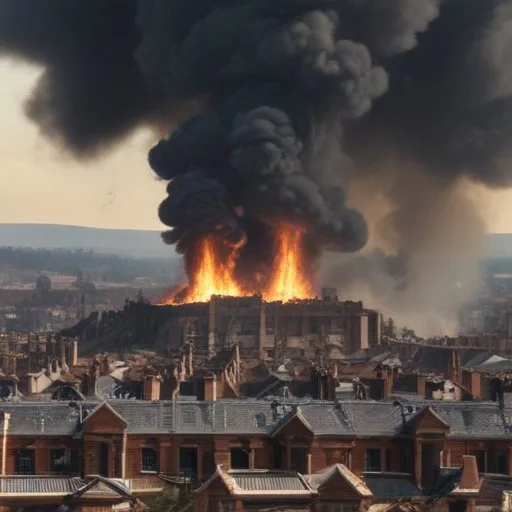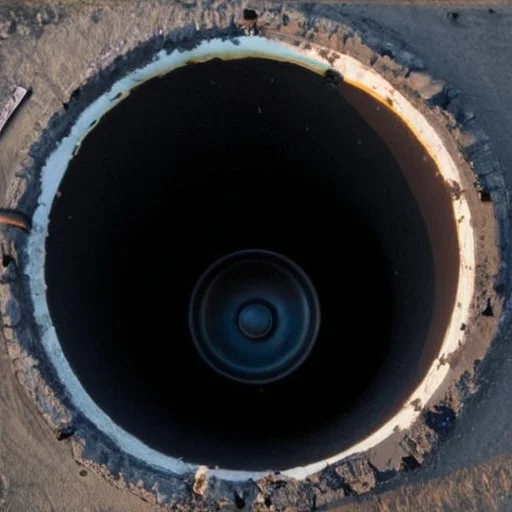On a fateful night in October 1943, the charming German town of Kassel was transformed into a scene from hell, as the Royal Air Force (RAF) unleashed a devastating air raid that would leave an indelible mark on the city and its people. The bombing campaign, codenamed Operation Corona, was designed to cripple German morale and disrupt industrial production, but the consequences were far more catastrophic.
In the midst of World War II, the Allies were determined to weaken Germany's war efforts by targeting its industrial cities. Kassel, located in the heart of Germany, was a crucial hub for the production of tanks, aircraft, and other military equipment. The RAF, led by Air Chief Marshal Arthur Harris, had been conducting a series of raids on German cities, but the bombing of Kassel would be one of the most brutal and destructive.
On the night of October 22-23, 1943, a fleet of 569 Lancaster bombers took to the skies, carrying over 1,800 tons of high explosives and incendiary devices. The bombers dropped their payload in a precise pattern, designed to create a firestorm that would engulf the city. The resulting inferno raged for hours, fueled by strong winds and the largely wooden construction of Kassel's buildings.
The bombing of Kassel was one of the deadliest and most destructive air raids of World War II. The official tally reported 10,000 people killed, with estimates suggesting the true number may be higher. The city's infrastructure was reduced to ruins, leaving 150,000 people homeless and without access to basic necessities like food, water, and shelter. The bombing also destroyed much of Kassel's historic center, including the iconic Fridericianum museum and the stunning St. Martin's Church.
Witnesses described the bombing as a "hellish inferno," with flames engulfing entire city blocks. One survivor, a young girl named Anna, recalled hiding in a cellar with her family as the bombs rained down above. "The noise was deafening, and the heat was unbearable," she said. "We thought it was the end of the world."
The bombing of Kassel marked a turning point in the Allies' bombing campaign against Germany. The raid demonstrated the devastating power of strategic bombing, and it paved the way for future raids on other German cities. The operation also led to changes in the way the RAF conducted bombing missions, with a greater emphasis on precision targeting and minimizing civilian casualties.
The bombing of Kassel had a profound impact on German culture and society. The raid led to a significant shift in public opinion, with many Germans questioning the morality and effectiveness of the war effort. The destruction of Kassel's historic center also led to a renewed focus on preserving cultural heritage and rebuilding devastated cities.
Despite the devastation, the people of Kassel showed remarkable resilience and determination. In the aftermath of the bombing, residents banded together to rebuild their city, often using makeshift materials and innovative techniques. This spirit of hope and determination would inspire generations to come, serving as a testament to the strength and resilience of the human spirit.
The Luftwaffe, Germany's air force, had long been aware of the vulnerabilities in Kassel's air defenses. In the months leading up to the bombing, the city's anti-aircraft guns had been relocated to the Eastern Front, leaving it exposed to Allied air raids. Additionally, the city's air raid sirens had been rendered ineffective due to a combination of technical issues and human error.
Kassel's civilian population was also woefully unprepared for the impending disaster. Despite the city's importance as an industrial hub, many residents believed that it was immune to bombing, and few had taken the necessary precautions to protect themselves. The resulting chaos and devastation would be catastrophic.

Air Vice-Marshal Ralph Cochrane was a seasoned military commander with a reputation for innovative thinking. As the commander of the RAF's 5 Group, Cochrane played a crucial role in planning and executing the raid on Kassel. His expertise in precision bombing and his ability to adapt to changing circumstances made him a valuable asset to the Allied war effort.
Cochrane's leadership during the Kassel raid was instrumental in its success. He worked tirelessly to coordinate the efforts of the bomber squadrons, ensuring that the attack was carried out with maximum precision and minimal losses. His bravery and tactical genius would earn him numerous accolades, including the Distinguished Service Order.
The bombing of Kassel had a profound impact on German culture, particularly in the realm of art and architecture. The destruction of the city's historic center, including the iconic Fridericianum museum, led to a renewed focus on preserving cultural heritage in the face of war and destruction.
In the aftermath of the bombing, artists and architects from across Germany flocked to Kassel to help rebuild and restore the city's cultural treasures. This influx of creative talent would have a lasting impact on the city's cultural landscape, shaping its recovery and rebirth in the years to come.

The development of new bomber technologies played a crucial role in the success of the Kassel raid. The RAF's Lancaster bombers, with their advanced navigation systems and precision-guided munitions, allowed for unprecedented accuracy and destructive power.
The bombing of Kassel also drove innovation in German air defenses, as the Luftwaffe scrambled to respond to the new threat posed by the Allies' strategic bombing campaign. This technological arms race would continue to escalate throughout the war, driving advances in radar, jet engines, and other military technologies.
The economic costs of the Kassel raid were staggering, with estimates suggesting that the bombing caused over 100 million Reichsmarks in damages. The destruction of the city's industrial infrastructure, including factories and transportation hubs, would have a lasting impact on Germany's war effort.
The bombing also had significant economic implications for the city's residents, many of whom were left without homes, jobs, or access to basic necessities. The subsequent rebuilding efforts would require massive investments of time, money, and resources, placing a heavy burden on the city's economy for years to come.